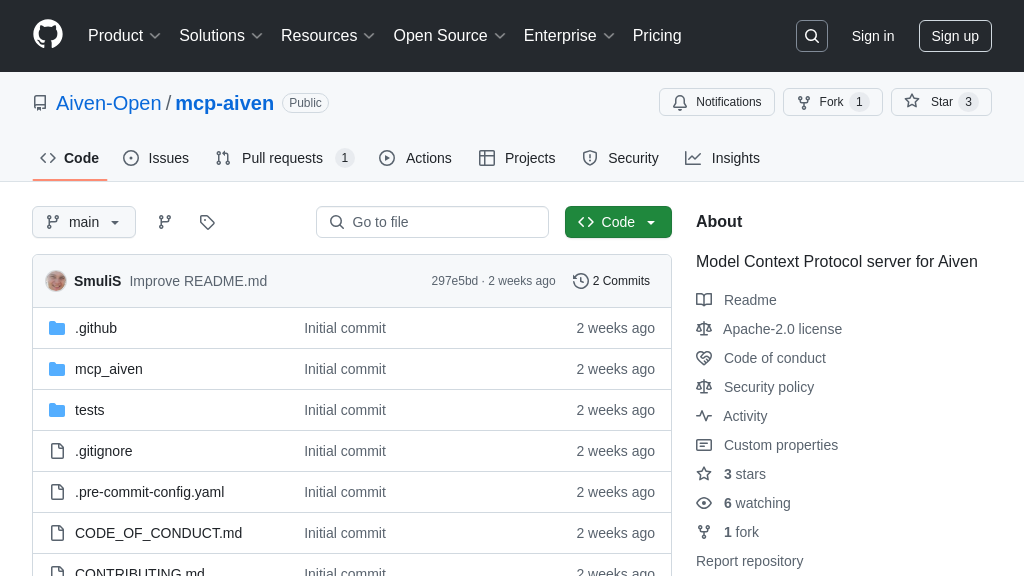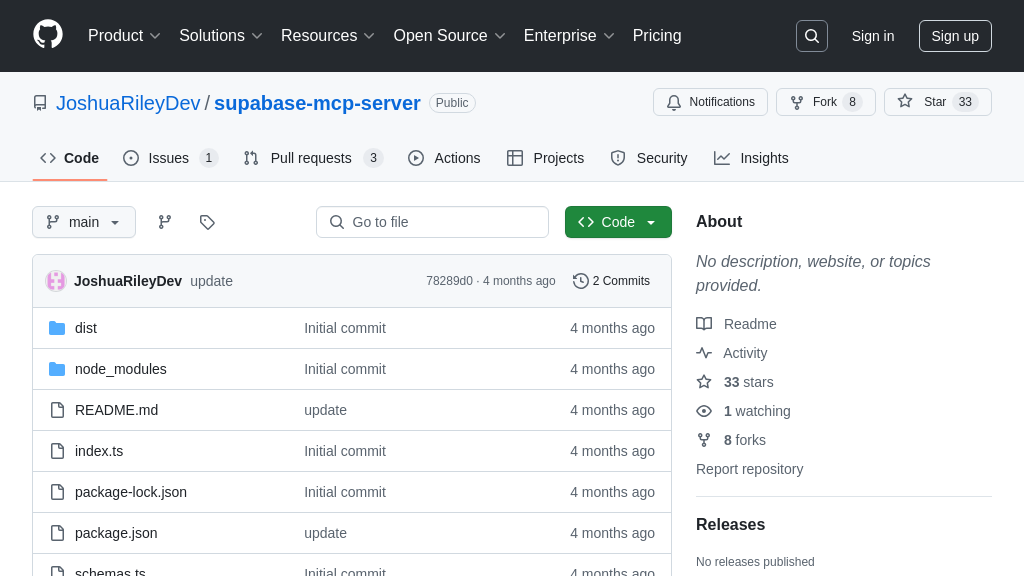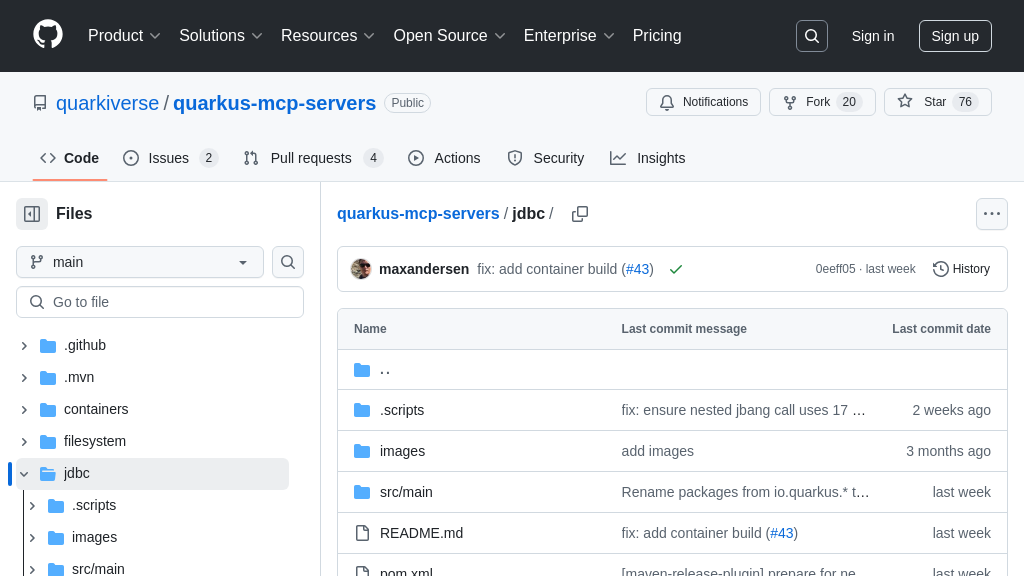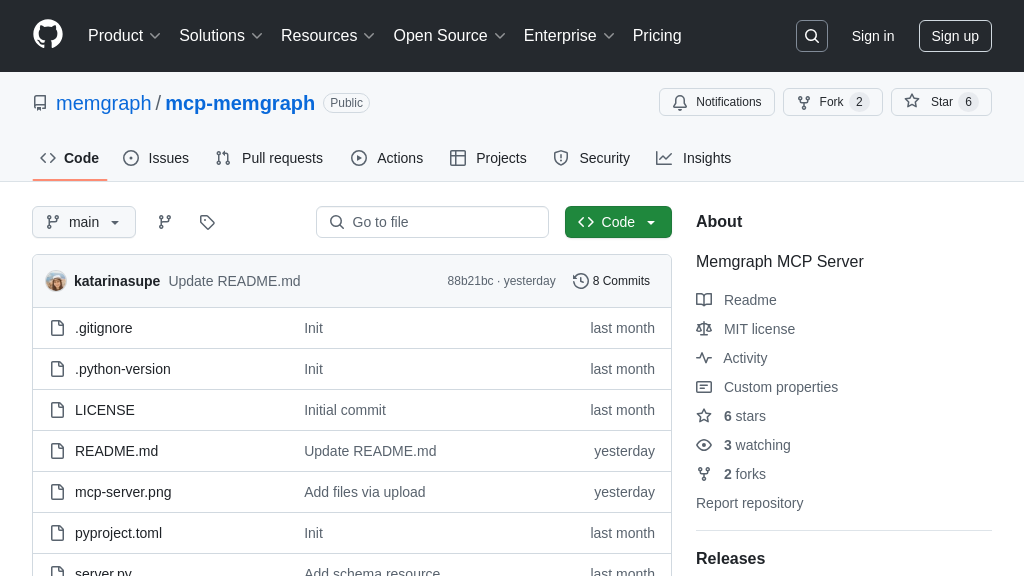mcp-mysql-server
The @f4ww4z/mcp-mysql-server is an MCP server enabling AI models to interact with MySQL databases through a standardized interface.
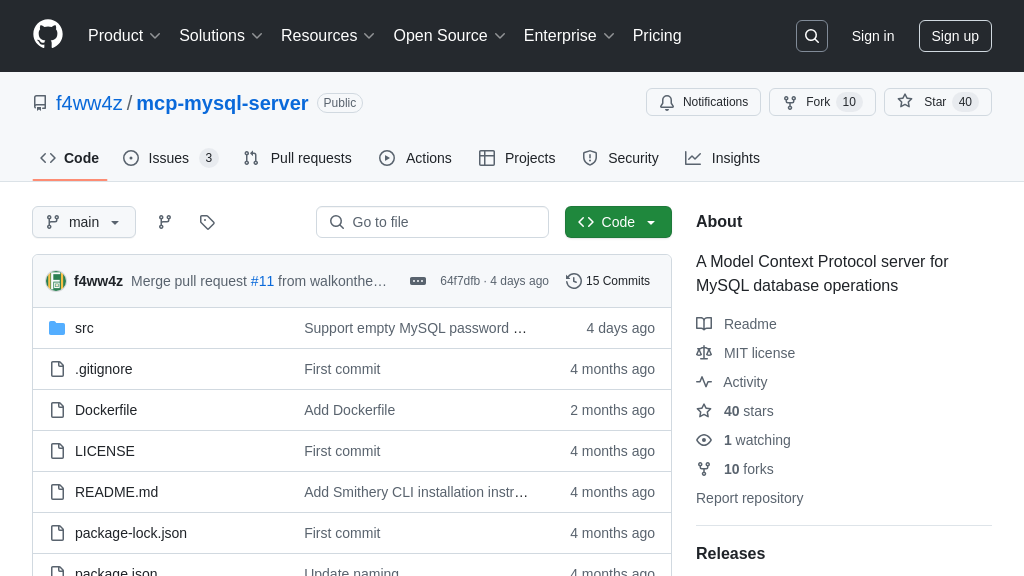
mcp-mysql-server Solution Overview
The @f4ww4z/mcp-mysql-server is an MCP server designed to seamlessly integrate MySQL database operations into AI models. As a crucial component of the MCP ecosystem, it empowers AI to interact with MySQL databases through a standardized interface. This server offers tools for connecting to databases, executing queries (SELECT, INSERT, UPDATE, DELETE) with prepared statement support, listing tables, and describing table structures.
By leveraging this server, developers can enable AI models to access, manipulate, and extract valuable insights from MySQL databases, enhancing AI functionality and decision-making. It addresses the challenge of securely connecting AI models to external data sources, preventing SQL injection through prepared statements and offering comprehensive error handling. Installation is streamlined via Smithery or manual setup, configurable with environment variables for secure credential management. This server simplifies the integration of MySQL data into AI workflows, accelerating development and improving data-driven AI applications.
mcp-mysql-server Key Capabilities
Database Connection Management
The mcp-mysql-server facilitates establishing and managing connections to MySQL databases. It uses credentials provided via environment variables (host, user, password, database) to create a secure connection. The server automatically handles connection cleanup, ensuring resources are released after each interaction. This feature simplifies database access for AI models, abstracting away the complexities of connection pooling and resource management. By managing connections, the server prevents resource leaks and ensures efficient database utilization. This is crucial for AI models that require frequent but short-lived database interactions.
For example, an AI model tasked with retrieving customer data might use this feature to connect to a database, fetch the required information, and then automatically close the connection, preventing the database from being overloaded with idle connections. The underlying implementation uses the mysql or mysql2 Node.js package to handle the connection and interaction with the MySQL database.
Query Execution with Prepared Statements
This feature enables AI models to execute SQL queries against the connected MySQL database. It supports both SELECT (using the query tool) and INSERT, UPDATE, DELETE (using the execute tool) operations. A key aspect is the use of prepared statements, which protect against SQL injection vulnerabilities by separating SQL code from user-supplied data. The server validates queries before execution and provides detailed error messages for invalid queries or missing parameters. This ensures data integrity and system security.
Consider an AI model designed to update product prices in a database. It can use the execute tool with a prepared statement to update the price of a specific product, preventing malicious SQL code from being injected into the query. The prepared statements are handled using placeholders in the SQL query, which are then replaced with the actual values during execution by the mysql or mysql2 library.
Table Schema Discovery
The mcp-mysql-server provides tools for discovering the structure of tables within the connected database. The list_tables tool returns a list of all tables, while the describe_table tool provides detailed information about a specific table's schema, including column names, data types, and constraints. This feature allows AI models to dynamically understand the database structure and adapt their queries accordingly. It eliminates the need for hardcoding table schemas into the AI model, making it more flexible and adaptable to changes in the database.
For instance, an AI model designed to generate reports from a database can use these tools to discover the available tables and their schemas, and then construct appropriate SQL queries to extract the required data. The describe_table tool internally executes a DESCRIBE table_name query against the MySQL database and returns the result set, which is then formatted and returned to the client.
